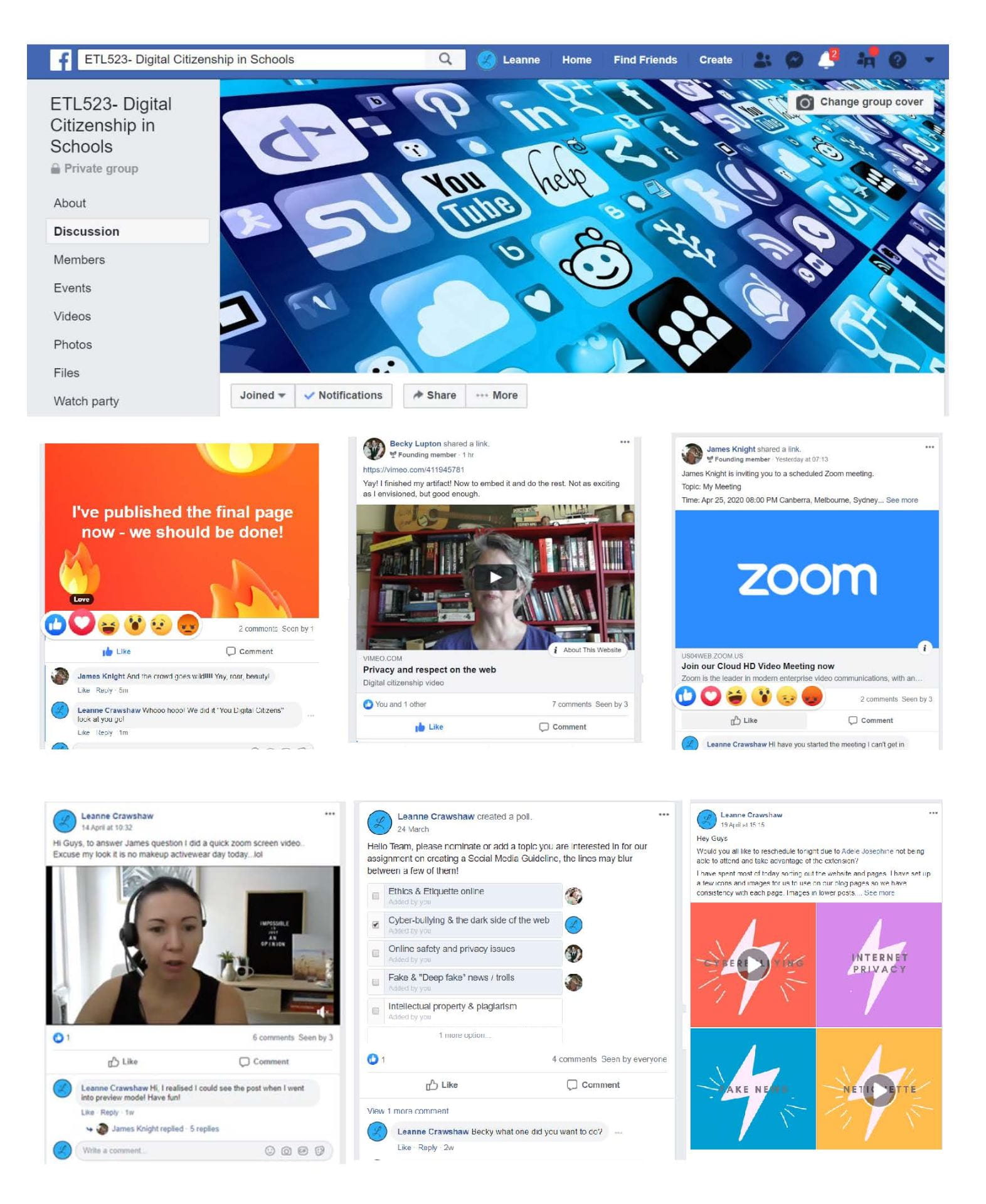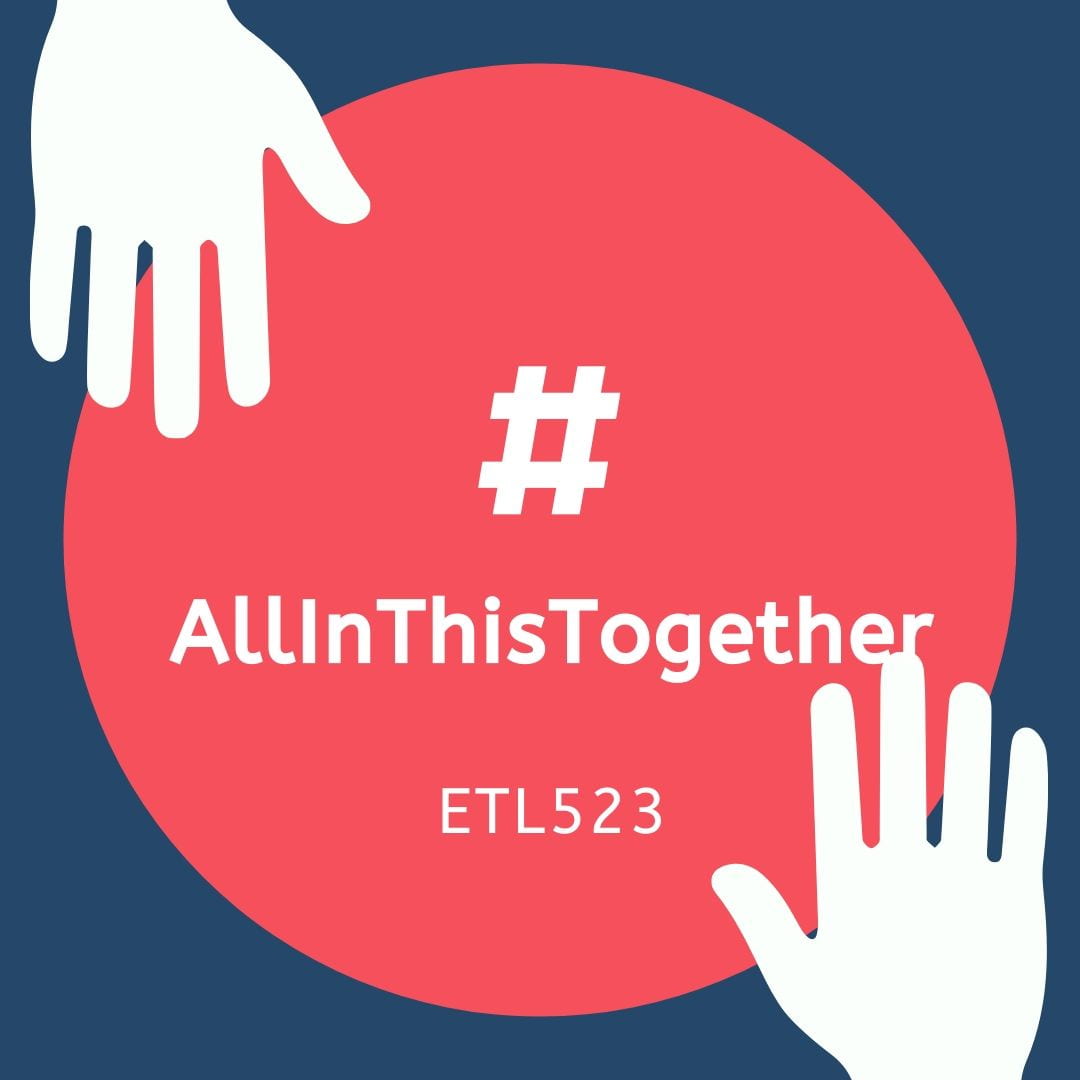
“Online collaborative group experience and resulting online module”
With the introduction of Web 2.0 platforms, collaborative learning is achieved through incorporating cloud-based and social media platforms to communicate, share information and work together as a team, however, it is not an easy method and does present challenges (Shonfeld & Gibson, 2019, p. 16). Research indicates Collaborative learning is linked to stress with high levels of anxiety, especially when the work is being assessed due to having to rely on “unknown others” (Hilliard, et al., 2019, p. 143). My initial thoughts when commencing this assignment is, I hope I am with a team that is proactive and everyone contributes evenly to meet the deadline, otherwise, this is going to be an arduous task.
Successful group work is achieved when the members have good communication and strong interpersonal skills to problem solve, negotiate and build a sense of “Team Spirit” if this is not established goals may not be achieved (Cheng et al., 2020, p. 247). I was part of the Social Media & Networking Guide group to co-create a learning module on the responsible use of social media in Education and worked collaboratively with James Knight, Rebecca Lupton and Adele Boeti.
Our first discussion was an online Zoom video meeting were able to introduce, discuss location, occupations and during this session, we defined roles and responsibilities. After the meeting, I was confident I was part of a proactive group with great interpersonal skills. Although strangers, we all had one thing in common, our world had changed due to the COVID-19 pandemic. Each of us was quickly adapting to a new way of living and the slogan “We are all in this together” resonated with our group to establish “Team Spirt”.
Collaborative learning requires clear communication, leadership and defined roles and responsibilities outlined (Chatterjee et al., 2020, p. 249) In our first Zoom meeting we established communication methods, agreeing to use Zoom once a fortnight to keep up to date and make changes to the website. A Facebook group was created for ongoing communication to share ideas and we made decisions using interactive polls. We used Google Documents to work collaboratively and created our learning module on Wix a free web-based platform.
Below is a screenshot capturing our Facebook activity. We made decisions via polls and I uploaded a video demonstration to help the team navigate the website development.
Research indicates a sense of community and a positive attitude towards online learning has a direct impact on the experience and achievement with a willingness to using collaborative tools like Google Documents, blogs and discussion boards (Chatterjee et al., 2020, p.56). My experience with Online Collaboration was very positive with each member contributed efficiently. The Facebook group established a sense of belonging within our digital community and as a result, we designed a professional learning module.
My current teaching practice due to COVID-19 has transitioned from face-to-face to online learning, providing the perfect opportunity for collaborative learning. The graduating students this year will not participate in a “Graduation exhibition” as an alternative, we will create a virtual exhibition. The students will be required to participate in online group collaboration to drive the event and go live in November. Positive Group dynamics are essential to working effectively in a team to achieve a shared goal. I now have the confidence to lead my students in a digital world after participating in this assignment.
References
Chatterjee, R. Correia, A. (2020) Online Students’ Attitudes Toward Collaborative Learning and Sense of Community, American Journal of Distance Education, 34:1, 53 https://doi.org/10.1080/08923647.2020.1703479
Cheng, S. Hwang, G. Lai, C. (2020) Effects of the group leadership promotion approach on student’s higher-order thinking awareness and online interactive behavioural patterns in a blended learning environment, Interactive Learning Environments, 28:2, 246-263, https://doi.org/10.1080/10494820.2019.1636075
Hilliard, J. Kear, K,. Donelan, H. Heansy, C. (2019) Student’s experiences of anxiety in an assessed, online, collaborative project. Computer & Education Volume 143, January 2020, 103675. https://doi.org/10.1016/j.compedu.2019.103675
Shonfeld, M., & Gibson, D. (2019). Collaborative Learning in a Global World. Information Age Publishing.


